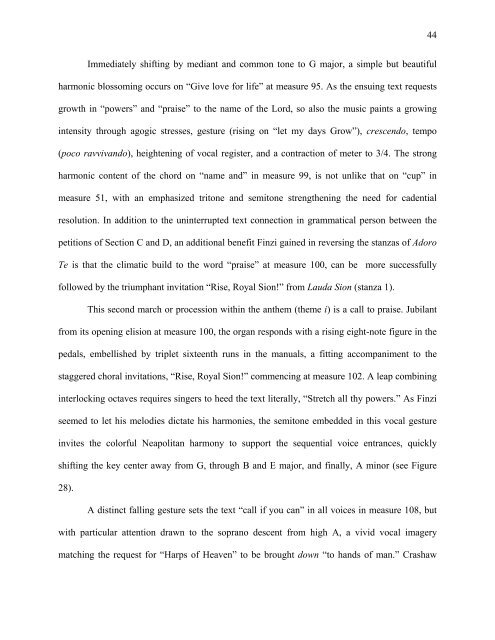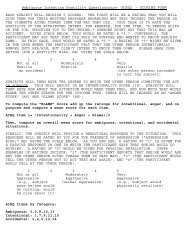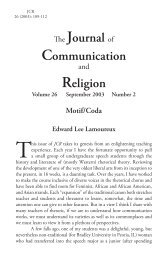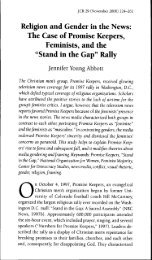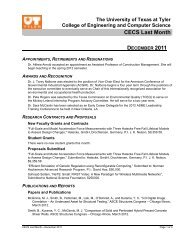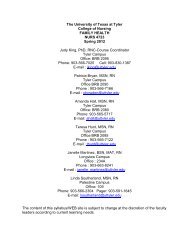"History, Analysis and Performance Considerations of Gerald Finzi's ...
"History, Analysis and Performance Considerations of Gerald Finzi's ...
"History, Analysis and Performance Considerations of Gerald Finzi's ...
You also want an ePaper? Increase the reach of your titles
YUMPU automatically turns print PDFs into web optimized ePapers that Google loves.
44Immediately shifting by mediant <strong>and</strong> common tone to G major, a simple but beautifulharmonic blossoming occurs on “Give love for life” at measure 95. As the ensuing text requestsgrowth in “powers” <strong>and</strong> “praise” to the name <strong>of</strong> the Lord, so also the music paints a growingintensity through agogic stresses, gesture (rising on “let my days Grow”), crescendo, tempo(poco ravviv<strong>and</strong>o), heightening <strong>of</strong> vocal register, <strong>and</strong> a contraction <strong>of</strong> meter to 3/4. The strongharmonic content <strong>of</strong> the chord on “name <strong>and</strong>” in measure 99, is not unlike that on “cup” inmeasure 51, with an emphasized tritone <strong>and</strong> semitone strengthening the need for cadentialresolution. In addition to the uninterrupted text connection in grammatical person between thepetitions <strong>of</strong> Section C <strong>and</strong> D, an additional benefit Finzi gained in reversing the stanzas <strong>of</strong> AdoroTe is that the climatic build to the word “praise” at measure 100, can be more successfullyfollowed by the triumphant invitation “Rise, Royal Sion!” from Lauda Sion (stanza 1).This second march or procession within the anthem (theme i) is a call to praise. Jubilantfrom its opening elision at measure 100, the organ responds with a rising eight-note figure in thepedals, embellished by triplet sixteenth runs in the manuals, a fitting accompaniment to thestaggered choral invitations, “Rise, Royal Sion!” commencing at measure 102. A leap combininginterlocking octaves requires singers to heed the text literally, “Stretch all thy powers.” As Finziseemed to let his melodies dictate his harmonies, the semitone embedded in this vocal gestureinvites the colorful Neapolitan harmony to support the sequential voice entrances, quicklyshifting the key center away from G, through B <strong>and</strong> E major, <strong>and</strong> finally, A minor (see Figure28).A distinct falling gesture sets the text “call if you can” in all voices in measure 108, butwith particular attention drawn to the soprano descent from high A, a vivid vocal imagerymatching the request for “Harps <strong>of</strong> Heaven” to be brought down “to h<strong>and</strong>s <strong>of</strong> man.” Crashaw


